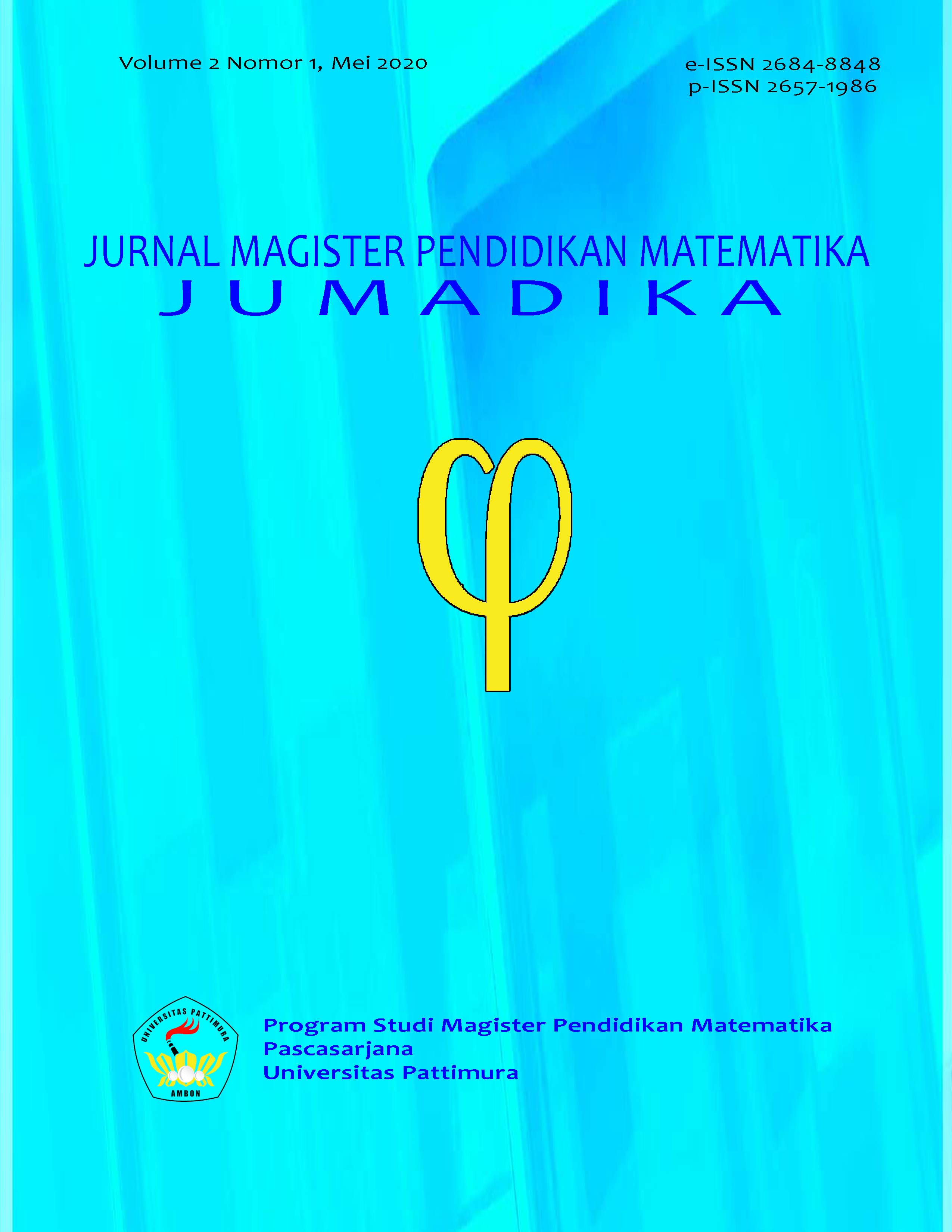ANALISIS KEMAMPUAN REPRESENTASI MATEMATIS SISWA
Abstract
The ability Mathematical representation is very important for students to have, because it can facilitate students in solving mathematical problems. This study aims to describe the ability of mathematical representation of class VII students of SMP Negeri 14 Padang. The results showed that 82.7% of students used visual representations, 38% of students used representations of Equation or mathematical expressions and 23.3% of students used representations of words or written texts. The highest indicator of visual representation is to draw geometric figures to clarify the problem and facilitate its solution, while the lowest indicator of the representation of words or written text is to write the steps to solve mathematical problems with words
Downloads
References
Astuti, R., & Siroj, R. A. (2017). Analisis Kemampuan Representasi Siswa dalam Menyelesaikan Soal Matematika. Prosiding Seminar Nasional Pendidikan (p. 512). Palembang: FKIP Universitas Muhammadiyah Palembang.
Creswell, J. W. (2010). Research Design: Pendekatan Kualitatif, Kuantitatif, dan Mixed. Yogyakarta: Pustaka Pelajar.
Lestari, K. E., & Yudhanegara, M. R. (2015). Penelitian Pendidikan Matematika. Bandung: PT. Refika Aditama.
Moleong, L. J. (2012). Metodologi Penelitian Kualitatif. Bandung: Rosdakarya.
Mudzakkir, H. (2006). Strategi Pembelajaran TTW Untuk Meningkatkan Kemampuan Representasi Matematik Beragam Siswa; Sekolah Menengah Pertama (eksperimen pada siswa kelas II SMP di Kab. Garut). Tidak Diterbitkan. Tesis SPs UPI.
Syafrudin, Tomi, & Muksar, M. (2016). Kemampuan Representasi Matematis Siswa pada Materi Perbandingan. Seminar Nasional Matematika dan Pembelajarannya, 939.
Villegas, J. L., Castro, E., & Gutierrez, J. (2009). Representations in problem solving: a case study with optimization problems. Electronic Journal of Research in Educational Psychology. ISSN 1696-2095. No 17, Vol 7, 287.
Walle, J. A. (2006). Matematika Sekolah Dasar dan Menengah Pengembangan dan Pengajaran. Jakarta: Erlangga.
Yusuf, A.M. (2017). Metode Penelitian Kuantitatif, Kualitatif dan Penelitian Gabungan. Jakarta: Kencana.
Copyright (c) 2020 Hartiwi Ramanisa, Khairudin Khairudin, Syukma Netti

This work is licensed under a Creative Commons Attribution-NonCommercial-ShareAlike 4.0 International License.
License and Copyright Agreement
In submitting the manuscript to the journal, the authors certify that:
- They are authorized by their co-authors to enter into these arrangements.
- The work described has not been formally published before, except in the form of an abstract or as part of a published lecture, review, thesis, or overlay journal. Please also carefully read Jurnal Magister Pendidikan Matematika (JUMADIKA) Posting Your Article Policy.
- That it is not under consideration for publication elsewhere,
- That its publication has been approved by all the author(s) and by the responsible authorities – tacitly or explicitly – of the institutes where the work has been carried out.
- They secure the right to reproduce any material that has already been published or copyrighted elsewhere.
- They agree to the following license and copyright agreement.
Copyright
Authors who publish with Jurnal Magister Pendidikan Matematika (JUMADIKA) agree to the following terms:
- Authors retain copyright and grant the journal right of first publication with the work simultaneously licensed under a Creative Commons Attribution-NonCommercial-ShareAlike 4.0 International License (http://creativecommons.org/licenses/by-nc-sa/4.0/) that allows others to share the work with an acknowledgment of the work's authorship and initial publication in this journal.
- Authors are able to enter into separate, additional contractual arrangements for the non-exclusive distribution of the journal's published version of the work (e.g., post it to an institutional repository or publish it in a book), with an acknowledgment of its initial publication in this journal.
- Authors are permitted and encouraged to post their work online (e.g., in institutional repositories or on their website) prior to and during the submission process, as it can lead to productive exchanges, as well as earlier and greater citation of published work.








